“Ideal climate: Summer posters” exhibition
- Culture
- 2023 Aug 27
No better place than theSan Telmo museum for this exhibition!
Considered the Museum of Basque Society since 2011, this space, so emblematic of Donostia/San Sebastián, surprises us with an exhibition of poster advertisements for our city from a particularly interesting period, specifically the close of the 19th century, coinciding with demolition of the city walls (1864), to the decade of the 60s in the 20th century. Some 80 years which have been shaping the image of Donostia/ San Sebastián perceived in the outside world.
The "photographers" of that time
In Clima Ideal: Carteles de Verano, or "Ideal Climate: Summer Posters", we will see that illustrators were the "photographers" of the time, because the art of instant snapshots had not as yet fully emerged. They were the main exponents until the 1960s, when photography burst on to the scene. Many and varied illustrators represented Donostia/San Sebastián. Those who recreated the city without actually having been there, on the basis of photos and prints, and leading Basque illustrators who had studied at the San Sebastián School of Arts and Crafts, and even had an exclusive academic subject focusing on the artistic illustration of events.
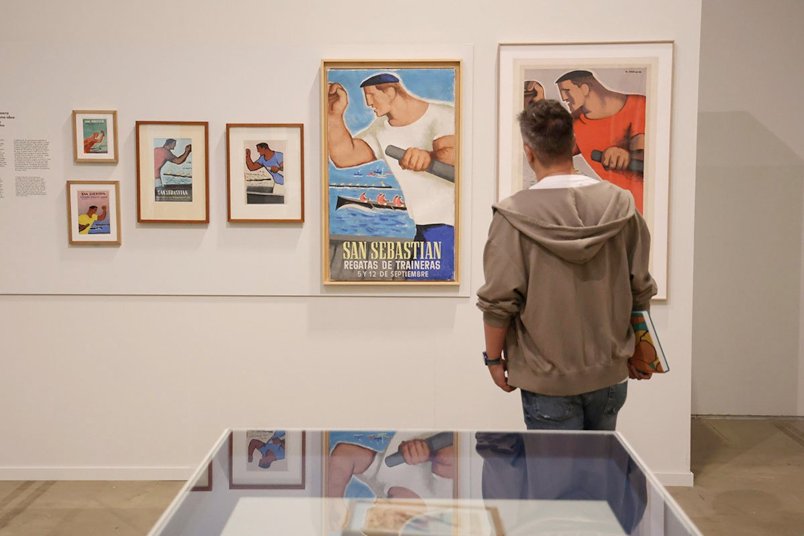 ©Iker Azurmendi
©Iker Azurmendi
The ideal climate
You may be wondering about this strange title. This is because "Ideal climate" is the slogan on one of the posters you will see at this exhibition. Designed by the illustrator Manolo Prieto in 1934, it depicts the agreeable average temperature of 22 degrees we enjoy in Donostia during the summer. But this title also has a slight twist to give it other meanings. For example, the 1920s and 1930s were the "ideal climate" in the world of art for the creation of many of the orig-inal posters you will enjoy in the collection. This was an age of artistic innovation and notable Basque illustrators, and so poster art in our city became very important indeed. It was also during this period that the posters began to be produced at a number of printing shops in the province, and women acquired more visibility in graphic arts.
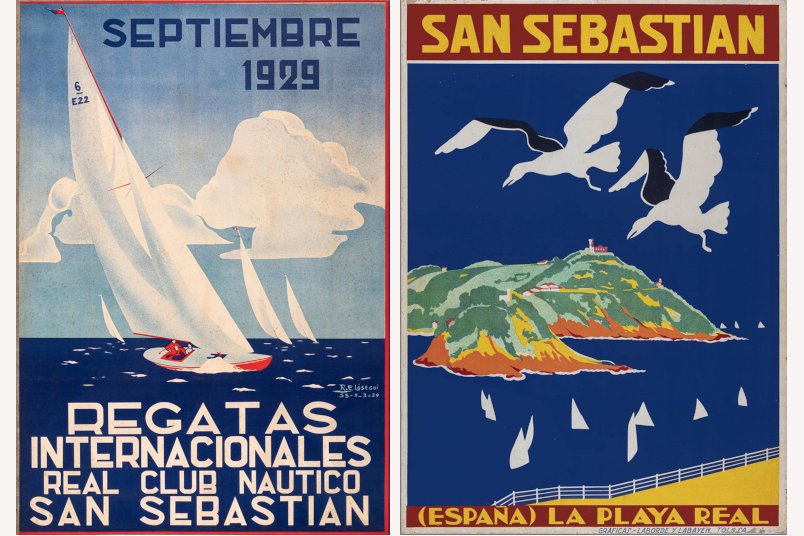
1.Rafael Elósegui.Regatas Internacionales, Real Club Náutico, San Sebastián, 1929. San Telmo Museoa. 2.Ricardo García K-Hito.Roberto Gómez Roberto.San Sebastián, 1928. San Telmo Museoa.
Fleeting travelling posters
It comes as some surprise that, despite the number of posters on display for your enjoyment, most of the posters created during this period have disappeared with the passage of time. After all, at that time they were made for one-off promotions, summer campaigns or one-day events, and there were no computers or hard disks to store them in ... they were considered disposable items.
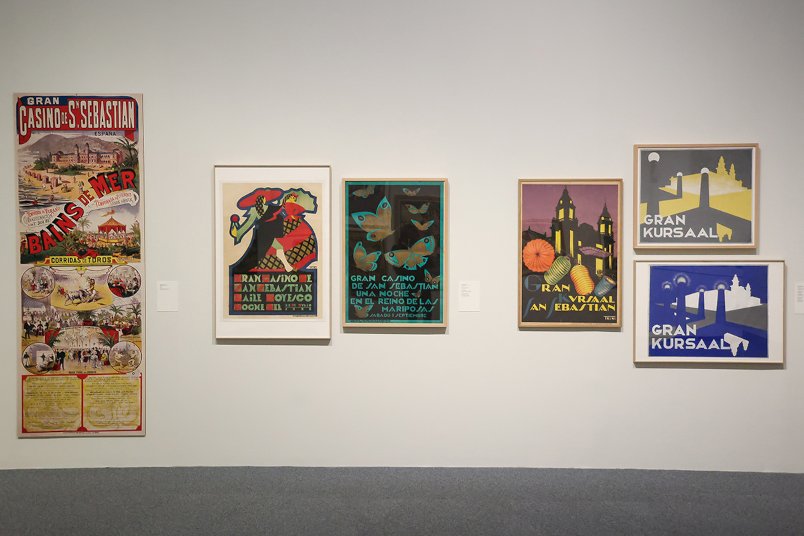 ©Iker Azurmendi
©Iker Azurmendi
Nevertheless, this major exhibition was made possible thanks to collectors and the original artists who kept many of their creations. In fact, some of these posters were retrieved from the US or Paris. Donostia has travelled so much all over the world in these designs!
But not with these designs alone. Did you know that hotels in the city used to give visitors stickers they could put on their suitcases, so that everyone would know they had been in Donostia? The stickers allowed them to show off their visit to the city.
“A night in the butterfly kingdom”
Even though we may find it strange nowadays, the first advertisement to promote Donostia was not La Concha bay. The very first posters were made to advertise the Casino, bullfights. and the railway company Caminos del Hierro del Norte. The biggest surprise of all is to be found in the Gran Casino (opened in 1887), with its posters for exclusive events and a wide range of themes, designed after gambling was banned in 1924.1922 saw the emergence of the Gran Kursaal, a direct competitor of the Casino, which gave a boost to differentiation and the need for attractive activities to offer our visitors. And so we can now admire some extremely original posters, with thought-provoking titles such as "A night in the butterfly kingdom" (what kind of event could that be?)
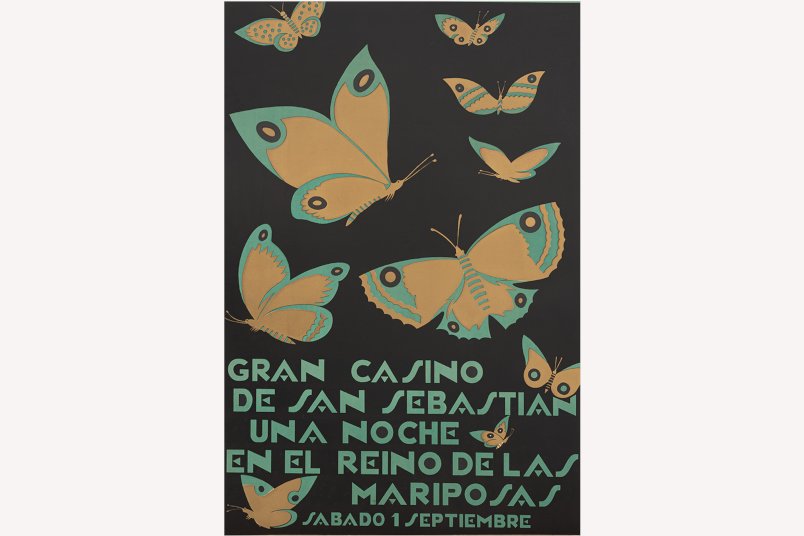
©John Zabalo, Txiki. Gran Casino de San Sebastián, una noche en el reino de las mariposas, 1920. San Telmo Museoa
Not everything takes place in Donostia
In the exhibition you will not only see posters about San Sebastián, but other towns in Gipuzkoa which are also major summer spots. Zarautz, Hondarribia … and a few in the hinterland such as Tolosa or Eibar. Each of which is depicted with its own specific hallmarks. "The Great Basque Week" also emerged in 1927 as an initiative to promote the Basque Country's customs and culture. These posters show aizkolaris, bertsolaris, txistularis … log-choppers, singing poets and "txistu" flute-players, to advertise events related to Basque folklore.
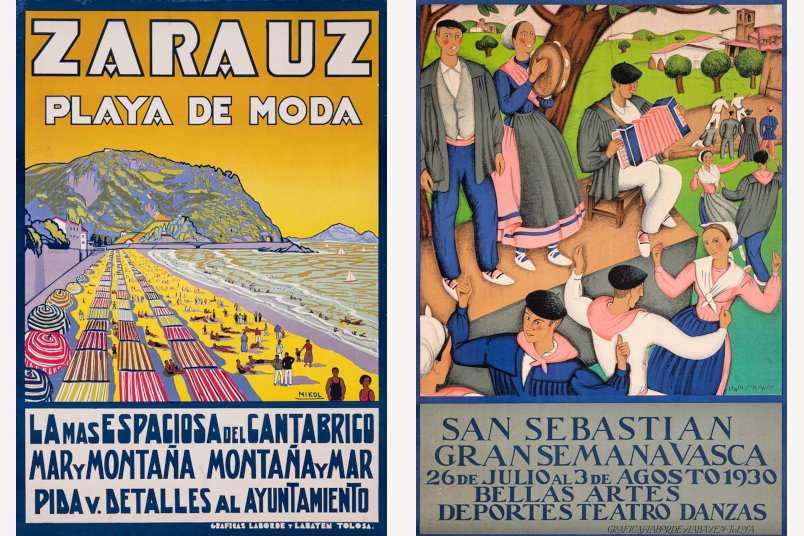
1.Nicolás Múgica Errasti(Nikol).Zarauz, playa de moda, c. 1929. San Telmo Museoa. 2.Carlos Landi Sorondo. San Sebastián, Gran Semana Vasca, 1930. San Telmo Museoa.
A tradition of sport
Not for nothing does the exhibition have an exclusive sport category. For decades Donostia/ San Sebastián has hosted numerous national and international sporting events (this year, in point of fact, we had the Tour de France). Its geographic location between sea and mountain has made our city an incomparable destination for a multitude of different sports. Close links to the sea, for example, led to competitions which have survived to the present day, such as La Concha's regattas. Motor racing, horse racing, pigeon shoots and tennis also serve as publicity and distinction for the European elite. Although these are activities which only very few people can afford, their mark has passed the test of time, and we now have all these sports available for our enjoyment in our city, with high levels of quality.
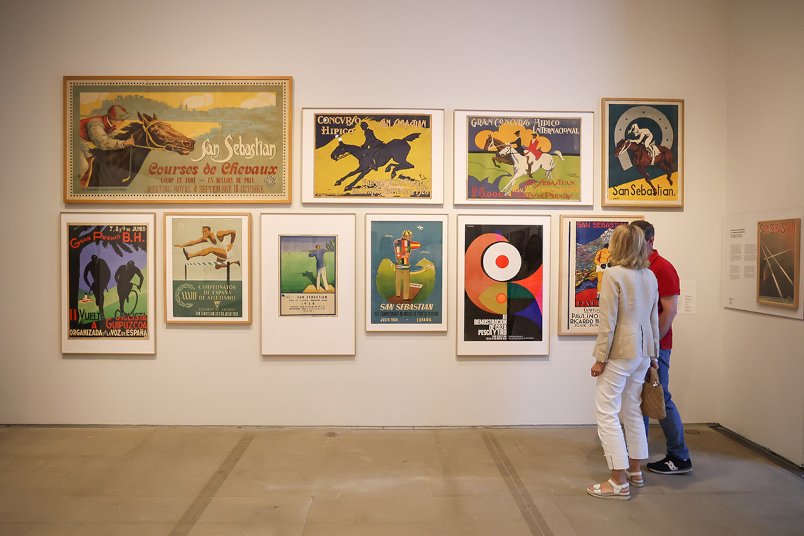 ©Iker Azurmendi
©Iker Azurmendi
More than 150 years of summering in Donostia
Donostia/San Sebastián has been bringing in visitors for more than 150 years. The great transformation began following the demolition of Donostia's walls, turning it into a modern, cosmopolitan, liberal city where many Spanish and European aristocrats and upper-class bourgeois would spend long periods of time. They came to enjoy the great charm of the city, both in terms of scenery and also from the social and cultural perspective. The La Perla spa, Hotel María Cristina, the Victoria Eugenia Theatre and the Igueldo Funicular Railway were all opened in a single year, specifically 1912. You've heard of all those places, haven't you?
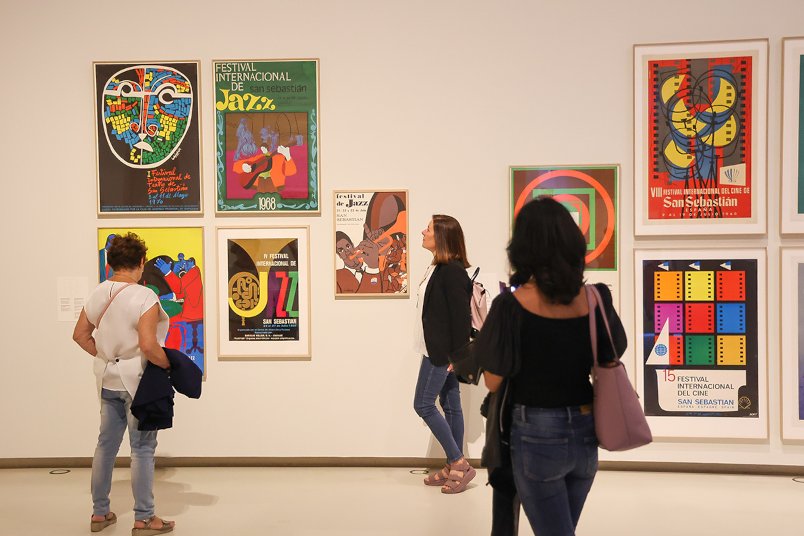 ©Iker Azurmendi
©Iker Azurmendi
At “Clima ideal. Carteles de Verano” you will see representations of all these iconic locations in Donostia. You will also appreciate the care taken with the design of the images that showed Donostia / San Sebastián to the world for the first time.
The "Clima ideal. Carteles de verano" exhibition will be open at the San Telmo Museum from 1 July to 15 October.

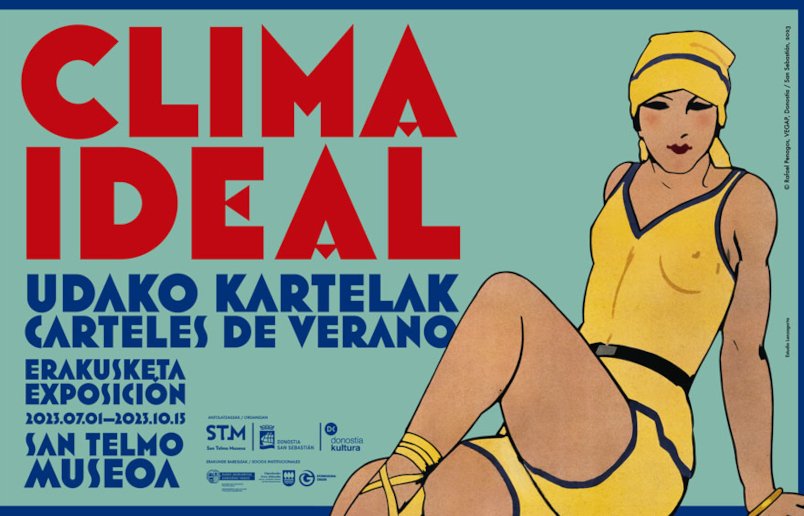 ©
©